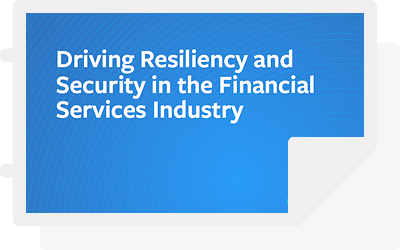The change of seasons amazes me. I’m always blown away by the earth’s ability to transform so dramatically. In my neck of the woods, it’s those first shoots of green, springing up from the ground—sometimes through the last mounds of snow—that remind me: resiliency really is the most remarkable thing.
I’ve been thinking about resiliency at work, too. Things are beginning to shift, and businesses are starting to wonder what recovery will mean for their people, customers and bottom line. We know resiliency—and our recommitment to building it—will play a major part in the way organizations focus going forward. Embedded well, resiliency enables organizations to respond to the kinds of crises we’ve seen in the last year, in a way that can seem just as magical as the grass starting to grow.
But you know, and I know: resiliency doesn’t happen by chance. It’s cultivated deliberately, and entrenched systematically both across the business, and deep within the culture. A new global survey shows seven out of 10 business leaders across 73 countries say they’re primed to increase investments in resiliency building. That number climbs to nine out of 10 when we look specifically at risk leaders. I’ve got to say, they’re right to do so.
When I look out across financial services in particular, I see great examples of initiatives and programs rolling out now to buoy resiliency down the road. Digital transformation can—in fact, must—play a significant part in generating the kind of resiliency financial services organizations need next. Equally important: if you apply that same energy to helping your customers strengthen their resiliency, you just might differentiate yourself in the market at the very same time.
How so? Resiliency doesn’t only mean closing gaps and vulnerabilities that leave your organization exposed. By flipping the paradigm, and helping your customers strengthen their own resilience, you can set yourself apart as a fintech of choice in a sea of changing competition. I see two fundamental ways digital transformation can help you do that right now.
First and foremost, when you seek to understand the end-to-end business services you provide customers, you can spot any weak links in the chain, and address them. That’s critical. It’s like the principle of ‘help us, help you’. Creating a more seamless digital experience within your own teams, systems, processes and ways of working drives a better end result for you and your customers. That can give them an important lift in the market; one that reflects well on the service you provide.
Those are the kinds of things that deepen customer relationships, and generate the kind of loyalty that sustains an organization through the next crisis, and the one that might come after that. That’s a multi-layered approach to resiliency building that helps everyone run better, even while they reinvent themselves.
What else? Manage your existing services with a platform that provides observability and actionability for the full spectrum of your business services (not just individual applications or infrastructure components). When you have holistic line of site into exactly what’s happening, when, and why, you create an intrinsic agility that allows you to adjust course any time you need.
That allows you to be more resilient to unforeseen circumstances. It also ensures you can continue delivering to your customers, no matter what happens in the broader environment. The right digital connectedness on the back end translates into seamless service for them, on the front end. That distinguishes you in the eyes of customers. It’s one more way you can bolster their ability to be resilient, and keep on keeping on (no matter how stormy the weather). That’s huge.
There are so many opportunities to push your digital transformation forward with connected capabilities that speak right to resilience for you, and your customer. Maybe even your customer’s customer. Build your own resiliency by committing to helping your customers strengthen their own, and you just might uncover a new competitive advantage in 2021, and beyond.







